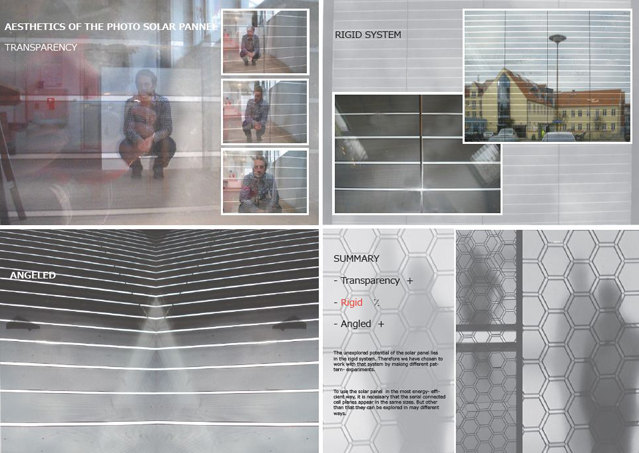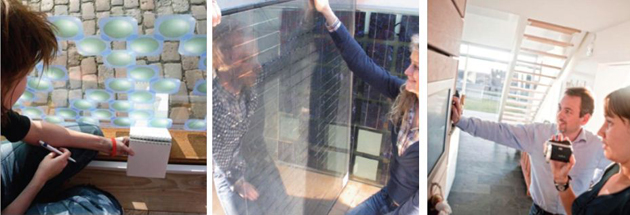
by Ellen Kathrine Hansen, Department of Architecture, Design and Media Technology, Aalborg University, Denmark
ARCHITECTURAL EXPERIMENTS. Design with Knowledge (PHD – Thesis)
The vision of creating balance between the consumption and production of energy in our build environment has created ambitious energy targets and requirements in the building regulations, which has accelerated the development of new energy optimized technologies and components. This has increased the focus on quantitative values in the process of designing energy optimized buildings. There is a need to focus on user aspects and qualitative values by retaining architectural qualities through transdisciplinary design processes: processes where scientific and technical knowledge is mixed with cultural awareness in a “hybrid imagination”, processes where scientific and creative methods are united through designing with several criteria. In the thesis it will be discussed, how this can be done using light as a multidimensional design element in architectural experiments.
The thesis is motivated by my experience from a number of interdisciplinary architectural experiments, which I have realized in the period 2001-2011 as a researcher and teacher at schools of architecture and as a project manager in the construction industry. Through these I have developed methods, concepts for collaboration, cross-disciplinary research, education, industry, technology, developmental environments and practice in the process of developing energy producing technologies, components and buildings with architectural potentials.
Three experiments from my previous work are used as the empirical material in the thesis to demonstrate: a model to collaborate and incorporate knowledge from a diversity of fields by defining criteria and visions, constructions and various methods for compiling and synthesizing the values. In all three experiments light is central as a multidimensional design element, both to produce energy and add architectural values.
The theory in the thesis is drawn from knowledge from different fields such as architecture, innovation, design and anthropology to form a multidisciplinary theoretical platform discussing how to mix and transform knowledge through experiments.The thesis thus addresses the question, how can knowledge of light from different disciplines support a creative design process and generate new knowledge, which supports a sustainable development?
To approach the problem area of the development of knowledge through design in a transdisciplinary environment, the three experiments and the supporting theories demonstrate that research from different traditions can be integrated with distinct criteria in the projects. It is thus possible, in the same process, to work with hypotheses that are tested in parallel with the three criteria on the basis of technical/scientific, social science and art/humanities traditions.
It is intended that the outcome takes the form of generalized discussions, principals and concepts that can be adapted to individual development and educational progress and thereby create added value in sustainable living environments with focus on the natural resource of daylight – an energy source and an architectural potential.
This is a PhD thesis ‘without previous studies’, which means that publications from previous work are part of the thesis and will be included in the assessment.
The thesis can de downloaded from this link: http://www.create.aau.dk/images/Design_med_viden_Phd_indhold.pdf




